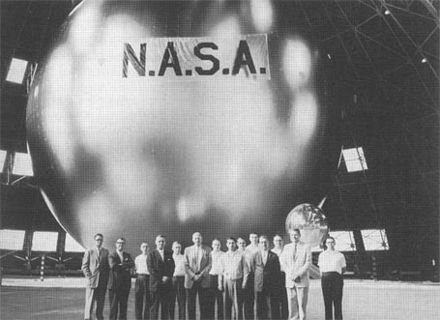The Treatment...
Anyone who visited our home in the '50s or '60s (and possibly later) was potentially a target of The Treatment. Generally speaking (though there were some exceptions), any given individual would have The Treatment administered once, and then they were exempt from further administrations – and could even participate in administering The Treatment to someone else.
What was The Treatment? There was no precise definition, but generally speaking it included (a) ice cubes down the pant legs while being held upside down, and (b) unconstrained tickling while being held to the floor by a horde of torturers. My dad was the boss of The Treatment administration.
I never fully understood the rules that determined exactly who would be subjected to The Treatment, but it certainly included any of my friends that I might invite over for a visit, so kids were definitely eligible. Some adults were also eligible.
One of my high school friends, Nom Loy, was given The Treatment on his second visit to our home. More than 20 years later, he talked with me of his disbelief and shock when my whole family worked together to capture him, restrain him, throw him on the floor, pick him up by the legs, and then pour a bowl full of ice cubes down his pants legs. This was so far outside his experience of family behavior that he simply couldn't process it. He could tell by our laughter that we weren't actually threatening him, yet our behavior suggested an attack. My mom pouring the ice cubes down his pants legs was the ultimate shock for him, the utter and absolute loss of all dignity – past, present, and future. All those years later, Nom still remembered his experience with The Treatment as traumatic – but he also recognized that afterward he was much more comfortable around us, much less careful and reserved.
While I was growing up, I never thought of our tradition of The Treatment as particularly unusual. The first time I can remember recognizing it as unusual family behavior was in Navy boot camp, in Orlando, Florida. A few of my fellow recruits were horsing around, and had wrestled their target to the floor. I suggested ice cubes down the pants legs to them, and that started a long discussion wherein I described The Treatment and they marveled that my family wasn't locked up in the loony bin. But they did get the ice cubes :)
I still have never met another person whose family had some tradition resembling The Treatment...
Monday, December 30, 2013
Pater: “The Treatment”...
Pater: “The Treatment”... At right, the top of Copper Gulch with Red Mountain in the background, where my dad and I spent hours wandering through meadows full of wildflowers on July 17th, 2005.
Project Echo...
Project Echo... I ran across a reference to this early space age project in my reading this morning, and that sent me off to read about it. Two Echo satellites made it to orbit: Echo 1 (5/13/1960 - 5/24/1960) and Echo 2 (1/25/1964 - 6/7/1969).
These satellites were enormous by today's standards: Echo 1 was 100 feet in diameter, and Echo 2 was 135 feet in diameter. Both were metalized Mylar balloons, and both were intended to be used as passive communications satellites – simple reflectors in space. Today's communications satellites are all either simple repeaters (devices with a radio receiver tied directly to a radio transmitter that simply retransmits an amplified version of whatever it “hears”) or more sophisticated routers (all-digital repeaters that not only amplify a signal, but can also send it through a particular antenna to the right part of the Earth's surface).
I have two memories of the Echo project. The first one was from shortly after Echo 1's launch in 1960, when I was just 8 years old. Because Echo 1 was so large, and had a mirror finish (reflective in visible light, not just radio frequencies), it was extremely bright for a satellite. That made it very easy to spot with the naked eye, and I remember standing outside at dusk with my Uncle Donald, in a soy bean field near his apple orchard, watching it transition overhead from horizon to horizon. It's funny how these old memories work – I remember it being my uncle that I was with, but I have no idea why. My Uncle Donald was not generally interested in space; he was into archaeology, fungi, and history...
The second memory is from several years later, when I was old enough to drive, still living in New Jersey, and was starting to design and build my own radio receivers and transmitters – most likely, in the late '60s. The first radio signals bounced off the Echo 1 satellite were transmitted from California and received in New Jersey. The receiver was a gigantic horn antenna (the Holmdel Horn Antenna), especially built at Bell Labs for the purpose. Later, in 1965, radio astronomers Arno Penzias and Robert Wilson used this same antenna to discover the cosmic microwave background radiation, which completely revolutionized cosmology.
This antenna was just 30 miles or so from the farm I grew up on (see map at left), and I drove up there one day to see if I could get a peek at it. At the time it was still privately owned by Bell Labs, and there was a fence keeping the public away – but one of the employees there saw me gawking through the fence and offered up a tour. For me the exciting part was in the little hut that you can see to the left of the antenna in the photo, with one window in it. The microwave receiver electronics were located in that shack, all custom-built stuff using the absolute latest and greatest. That employee turned out to be a technician who kept the gear tuned up (the microwave equipment of the day needed nearly constant attention to stay in tune), and very knowledgeable about the equipment. The main takeaway for me was a keenly whetted interest in bleeding-edge radio technology. When I enlisted in the U.S. Navy not long afterwards, that sort of technology is what I desperately wanted to learn about. Instead, they sent me off to learn about those boring old computers :)
These satellites were enormous by today's standards: Echo 1 was 100 feet in diameter, and Echo 2 was 135 feet in diameter. Both were metalized Mylar balloons, and both were intended to be used as passive communications satellites – simple reflectors in space. Today's communications satellites are all either simple repeaters (devices with a radio receiver tied directly to a radio transmitter that simply retransmits an amplified version of whatever it “hears”) or more sophisticated routers (all-digital repeaters that not only amplify a signal, but can also send it through a particular antenna to the right part of the Earth's surface).
I have two memories of the Echo project. The first one was from shortly after Echo 1's launch in 1960, when I was just 8 years old. Because Echo 1 was so large, and had a mirror finish (reflective in visible light, not just radio frequencies), it was extremely bright for a satellite. That made it very easy to spot with the naked eye, and I remember standing outside at dusk with my Uncle Donald, in a soy bean field near his apple orchard, watching it transition overhead from horizon to horizon. It's funny how these old memories work – I remember it being my uncle that I was with, but I have no idea why. My Uncle Donald was not generally interested in space; he was into archaeology, fungi, and history...
The second memory is from several years later, when I was old enough to drive, still living in New Jersey, and was starting to design and build my own radio receivers and transmitters – most likely, in the late '60s. The first radio signals bounced off the Echo 1 satellite were transmitted from California and received in New Jersey. The receiver was a gigantic horn antenna (the Holmdel Horn Antenna), especially built at Bell Labs for the purpose. Later, in 1965, radio astronomers Arno Penzias and Robert Wilson used this same antenna to discover the cosmic microwave background radiation, which completely revolutionized cosmology.
This antenna was just 30 miles or so from the farm I grew up on (see map at left), and I drove up there one day to see if I could get a peek at it. At the time it was still privately owned by Bell Labs, and there was a fence keeping the public away – but one of the employees there saw me gawking through the fence and offered up a tour. For me the exciting part was in the little hut that you can see to the left of the antenna in the photo, with one window in it. The microwave receiver electronics were located in that shack, all custom-built stuff using the absolute latest and greatest. That employee turned out to be a technician who kept the gear tuned up (the microwave equipment of the day needed nearly constant attention to stay in tune), and very knowledgeable about the equipment. The main takeaway for me was a keenly whetted interest in bleeding-edge radio technology. When I enlisted in the U.S. Navy not long afterwards, that sort of technology is what I desperately wanted to learn about. Instead, they sent me off to learn about those boring old computers :)
Double transportation cipher solved?
Double transportation cipher solved? That's the claim of this newspaper article, though no details are supplied...
Here we go!
Here we go! The start of every new year means new taxes, but 2014 has a bumper crop of them. One that's going to affect a lot of people: a new tax on healthcare policies (some cost reduction from ObamaCare, eh?) that will mainly affect small businesses, the self-employed, and retirees not on Medicare. Hey – that's me! Dang it!!
What the hell is happening to my country?
What the hell is happening to my country? Church ordered to take down “Support our troops” sign...




